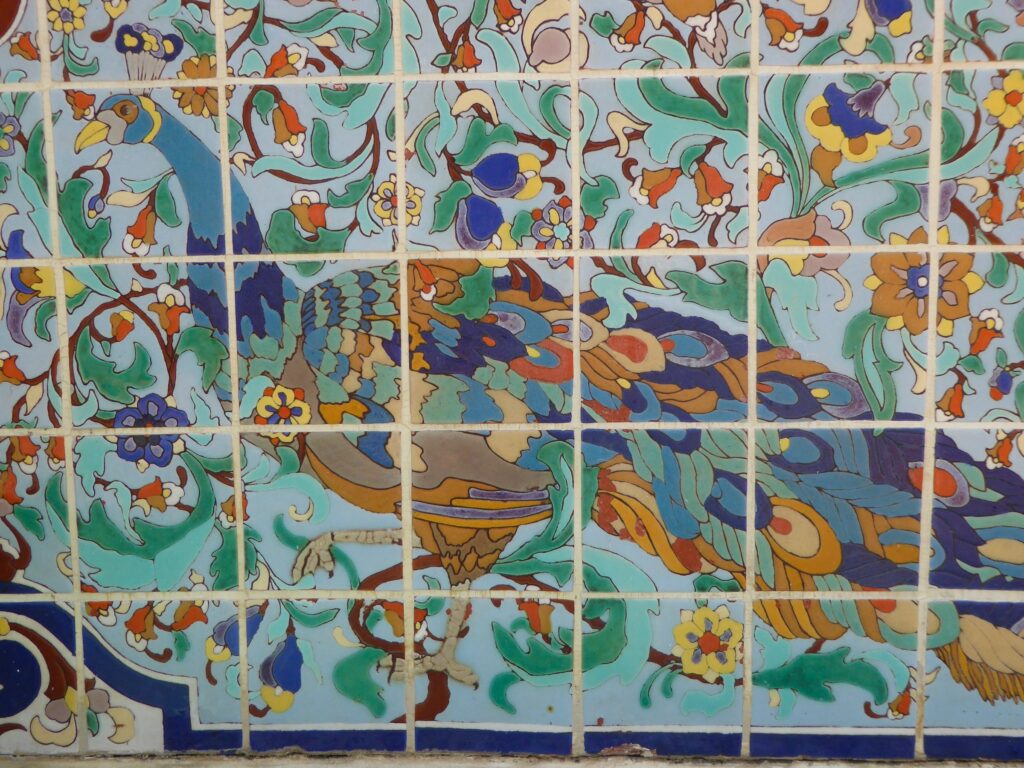
When the first wave of California’s oil boon swept over the state in the early years of the 20th century, May Knight Rindge hoped to strike black gold beneath the sea cliffs of Rancho Topanga Malibu Sequit. Instead, she found clay.
May’s husband, New England real estate tycoon turned philanthropist Frederick Hastings Rindge, died in 1905, leaving May to raise the couple’s three children and manage the 1,700-acre Rancho as well as the extensive Rindge properties throughout Los Angeles.
May spent much of the family fortune fighting to stop the railroads from forcing a right-of-way across the Rancho. By the 1920s, she was forced to begin selling off pieces of her beloved ranch—starting by leasing the spit of land that would become the Malibu Colony and then selling La Costa Beach, but it wasn’t enough.
Oil was being discovered all along the coast. Why not in Malibu? Test wells were drilled at the auspiciously named Carbon Beach in 1924. When May’s dreams of oil turned to clay, she turned around and found a use for it, founding Malibu Potteries in 1926.
California clay was used for thousands of years by the Chumash and Tongva people of the Santa Monica Mountains to create rock art. When the Spanish arrived, they used this natural resource to make adobe bricks and terracotta roofing tiles.
Clay was big business in California in the 19th century, used for everything from sewer pipes to tableware, but it wasn’t until the Arts and Crafts movement of the late 19th century that the craft was elevated to a fine art. Art tiles made using historic techniques and patterns were in demand to give the Moorish and Spanish Colonial revival architecture springing up all over California a touch of the romance of authentic Spanish castles like the Alhambra.
The Malibu Potteries factory employed 125 craftspeople, who transformed the local clay into colorful and decorative art tiles. May Rindge hired an impressive team of designers and artists, including famed designer Rufus Keeler, who developed the brilliant palette of glazes used in the tiles, inspired by ancient Moorish, Spanish and Persian tile design.
Topanga resident Donald Prouty was the designer responsible for the lavish tile murals the factory produced for Los Angeles City Hall. He had a hand in the now-famous Malibu Potteries Persian carpet design made of tiles. His wife Dorothy worked briefly as a secretary at the factory. Photos show the Proutys and other Malibu Potteries employees picnicking on the beach in front of the factory—enjoying a well-earned break from a period of extraordinary creative output—an estimated 30,000 square feet of finished tile each month.
Malibu Potteries made tiles in many styles—pictorial panels with flowers, animals, ships; carved and molded tiles inspired by ancient Egypt and Mayan glyphs; and even vases and pots, but the factory is best known for the tiles glazed using an ancient Spanish tile-glazing technique called cuerda seca, or “dry string.” It involved silk screening a design onto the tile and using a pastry-bag-like tool to carefully fill each part of the design with glaze. It was painstaking work that could only be done by hand, but it resulted in elaborate, vivid and complex designs.
For six years during the height of the arts and crafts revival, the factory next to the Malibu Pier produced tiles that can still be found in historic buildings all over Los Angeles, including Los Angeles City Hall and Union Station. However, the most extensive surviving collection of the tiles remains at the Adamson House, just a few hundred yards from where the tiles were produced.
When her daughter, Rhoda Rindge, married ranch foreman Merritt Huntley Adamson, May Rindge gave them the point of land next to the Malibu Lagoon to build a beach house. The Adamson House, located just down the road from the Malibu Potteries factory, was completed in 1930.
It is decorated throughout with Malibu Potteries tile. The Persian carpet, complete with tile fringe, decorates the floor of the downstairs hall. Peacocks adorn fountains and wall panels, a green man spouts water from his lips in the garden. Flowers, birds and mythical creatures appear in profusion on floors and walls, inside and out. The bathrooms and the house’s two kitchens are covered in custom tile, right down to the soap dishes. Even the outdoor tub built to make it easier to wash the family’s dogs is surrounded by hand painted tile. The house is also filled with arts-and-crafts-era murals, wrought iron, leaded glass, and hand-painted woodwork.
Malibu Potteries didn’t survive the Depression. The factory burned in 1931, and was never rebuilt, but the Adamson House preserves its colorful legacy. Rhoda Adamson lived in the house until her death in 1962. Activists battled to save the property from demolition for nearly two decades. Today, the house and 13 acres of garden are owned and operated by California State Parks. The site is one of only three Malibu locations on the National Registry of Historic Places, and is a designated California Historical Landmark.
Malibu tiles continue to be highly prized and much loved. Although the originals are increasingly scarce, reproductions are readily available. The Adamson House, its museum and the extensive gardens are currently closed due to the Coronavirus crisis, but the museum website offers a virtual tour. www.adamsonhouse.org

catastrophic fire.


Persian tile motifs.







